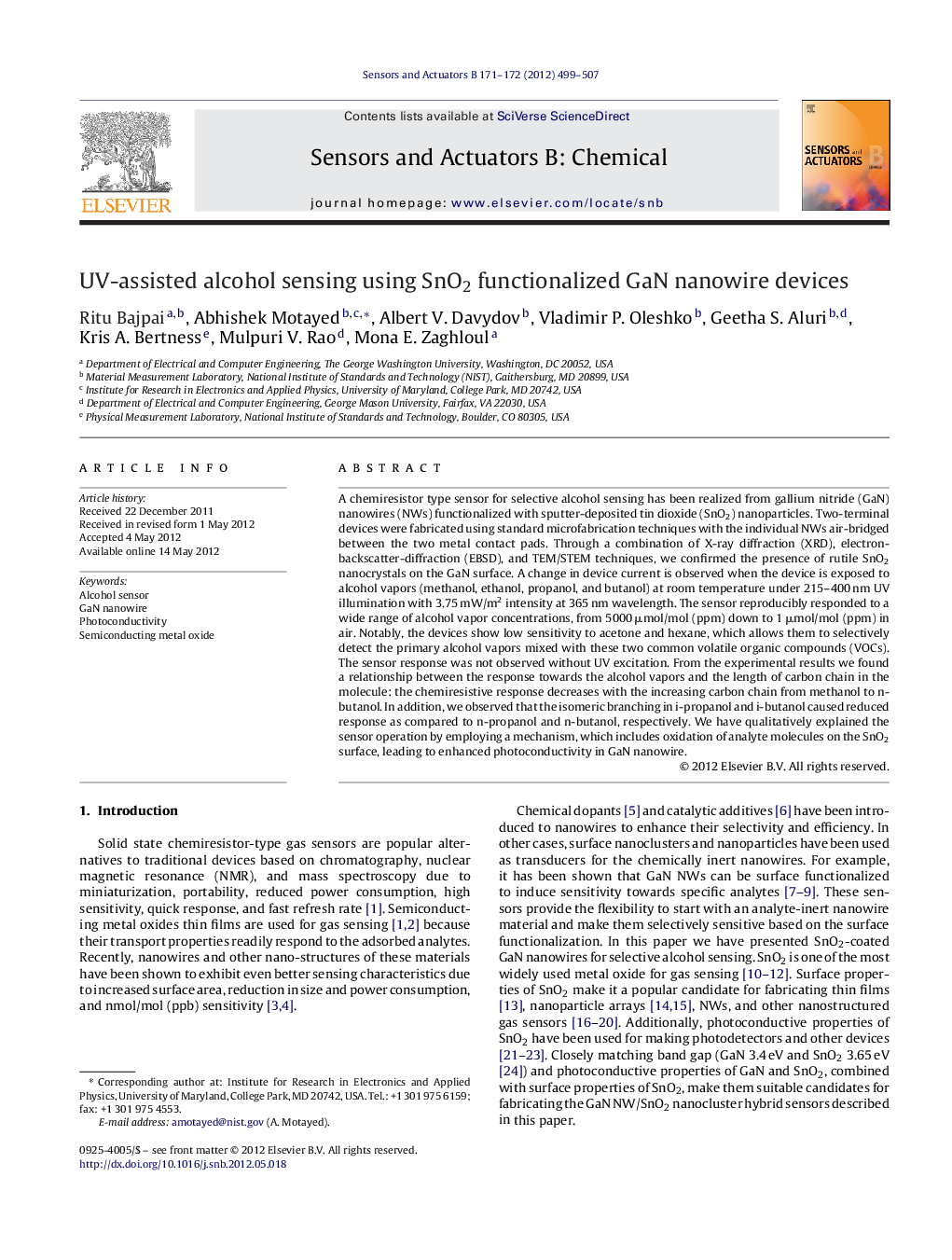| Article ID | Journal | Published Year | Pages | File Type |
|---|---|---|---|---|
| 745499 | Sensors and Actuators B: Chemical | 2012 | 9 Pages |
A chemiresistor type sensor for selective alcohol sensing has been realized from gallium nitride (GaN) nanowires (NWs) functionalized with sputter-deposited tin dioxide (SnO2) nanoparticles. Two-terminal devices were fabricated using standard microfabrication techniques with the individual NWs air-bridged between the two metal contact pads. Through a combination of X-ray diffraction (XRD), electron-backscatter-diffraction (EBSD), and TEM/STEM techniques, we confirmed the presence of rutile SnO2 nanocrystals on the GaN surface. A change in device current is observed when the device is exposed to alcohol vapors (methanol, ethanol, propanol, and butanol) at room temperature under 215–400 nm UV illumination with 3.75 mW/m2 intensity at 365 nm wavelength. The sensor reproducibly responded to a wide range of alcohol vapor concentrations, from 5000 μmol/mol (ppm) down to 1 μmol/mol (ppm) in air. Notably, the devices show low sensitivity to acetone and hexane, which allows them to selectively detect the primary alcohol vapors mixed with these two common volatile organic compounds (VOCs). The sensor response was not observed without UV excitation. From the experimental results we found a relationship between the response towards the alcohol vapors and the length of carbon chain in the molecule: the chemiresistive response decreases with the increasing carbon chain from methanol to n-butanol. In addition, we observed that the isomeric branching in i-propanol and i-butanol caused reduced response as compared to n-propanol and n-butanol, respectively. We have qualitatively explained the sensor operation by employing a mechanism, which includes oxidation of analyte molecules on the SnO2 surface, leading to enhanced photoconductivity in GaN nanowire.
